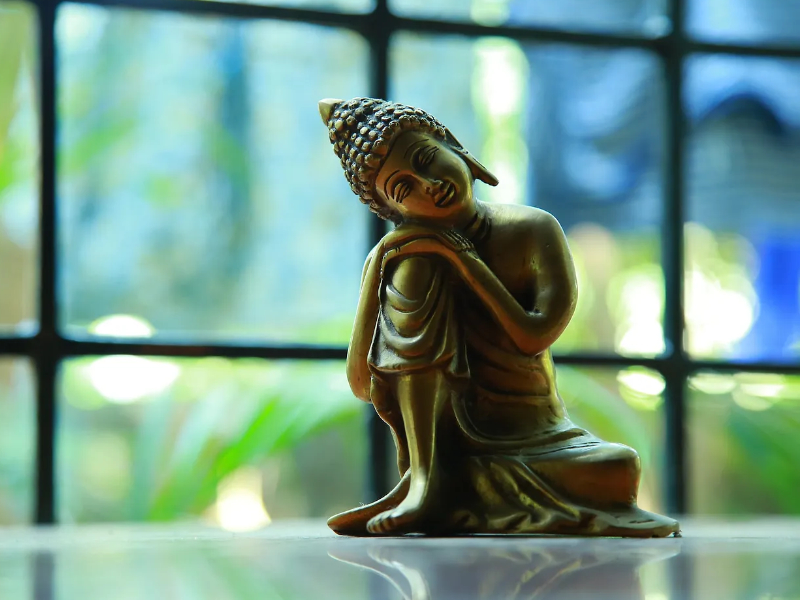Mindfulness
with John Driggs
Learn how to practice vipassana, or insight meditation, a 2500-year-old Buddhist practice that seeks to cultivate the state of mind commonly known as mindfulness.
What is Insight Meditation?
Vipassana, or insight meditation, is commonly interpreted as clear knowing or bare knowing. It is a means of looking directly at experience, without becoming identified with its contents. It’s a method to meet experience as it is, without becoming lost in thought, without your biases and judgments clouding the raw data of the experience itself.
Vipassana, or insight meditation, is a means to discover a lasting peace.
What is Mindfulness?
Our entire lives unfold in our minds, in the space of experience.
Mindfulness, as it’s cultivated through insight practice, connects us directly to experience. It helps us remain open to experience, interested in it, not lost in or identified with thought.
It is a means to wisdom and understanding. It opens us to ourselves. It allows us to know and to accept ourselves, our whole selves. It moves us to compassion – it positions us to hold a caring attention toward ourselves, toward others, and toward the world.
It points us to a lasting peace.
Mindfulness Articles
“What is Mindfulness”
Mindfulness practice is currently a fad in the West. And that’s wonderful — it’s great that, as a culture, we’re promoting more mindfulness and less mindlessness. But with its surge in popularity, there has also been a lot…
“The Art of Bare Attention”
Today we’re going to talk about the ancient Buddhist practice vipassana, or insight meditation. Now, just to be clear, this is an entirely secular practice. It doesn’t require you to adopt any dogmatic beliefs…
“Ardor & Clear Knowing”
There are two qualities that are often overlooked in vipassana, or insight meditation. The Satipatthana Sutta tells us we need more than just mindfulness on our path to awakening. We need ardor and…
“The Faceless Seer”
Because “I” can’t be removed from you, because it’s essential to you, only you can investigate it for yourself. So, go ahead, take a look. What is this thing you call “I”? Where is it? What is it like? What is its nature?…
“Hallucinations of View”
When we perceive the world without mindfulness, which is the norm for most people most of the time, then we simply know and remember only the surface appearance of things. Our experience becomes…
“Thinking Into Being”
Thought takes the seamless and interconnected whole of existence and breaks it into pieces, which can then come into relation to one another. It is in thought that ‘you’ and ‘I’ are born, where ‘you’ and ‘I’…
“Stepping Into Wholeness”
As you become more mindful, I think you’ll discover that there is no space between ‘you’ and what is known—no space between ‘you’ and the person across from you, no space between you and the world…
“Touching Suffering”
Once we start to open to suffering and dis-ease in our own lives, once we become more familiar with the mind-body process and the cause of ill-being, we begin to see suffering everywhere. We realize that…
“Dog Zen”
Historically, there are two approaches to awakening, sudden and gradual. In this article, we’ll explore these two approaches after flushing out the term non-duality. Then, we’ll practice some Dog Zen…
“Balanced Effort”
What will you do with this precious gift of life? Whatever it is, you will need effort to do it. Effort is the source of all achievement. It fulfills our aspirations, breathes life into our values, and turns our intentions…
“Everything Changes”
It’s no secret everything changes. Your experience this morning isn’t your experience now. Yet how many of us act like we really understand this? How often do we grasp onto the illusion of things…
“Awakening to Your Heart”
What do you think it’d feel like if you committed your time, energy, and awareness to alleviate the suffering all around you? How would it feel to wrap the world in a caring attention?
“The Four Noble Truths”
The Buddha taught only suffering and its end, which is expressed in the Four Noble Truths — the indispensable foundation embraced by all Buddhist traditions and lineages, no matter how far their metaphysics…
“You Want to Be Free?”
A common obstacle I hear from people who want to start a meditation practice is that it’s just too damn hard to sit still with themselves. I hear you, it is hard. Our culture is pathologically busy. We are so…
“Roots & Threads | Focus”
The Buddha said a mind without focus is like a fish out of water, flipping around with no control. We need it to stick with our goals, tasks, and aims, and to harmonize our words and actions with these aims…
“Wisdom Without End”
To help us navigate the landscapes of our experience with peace of heart and mind, the Buddha created a training program, made of three arenas: training in sila or moral conduct, training in cognition, and training in…

























